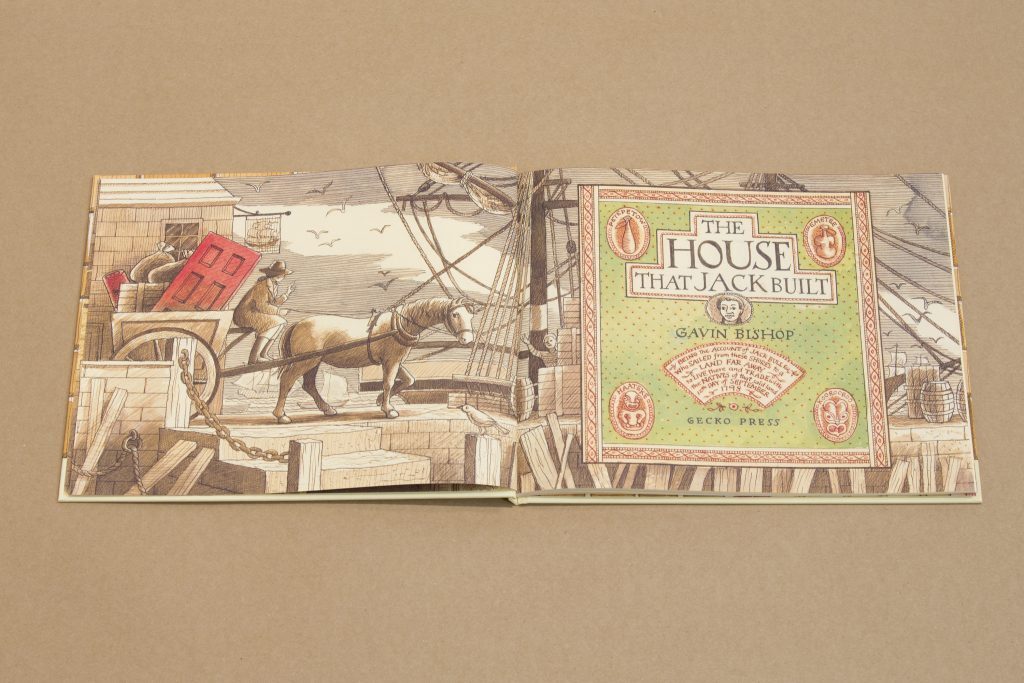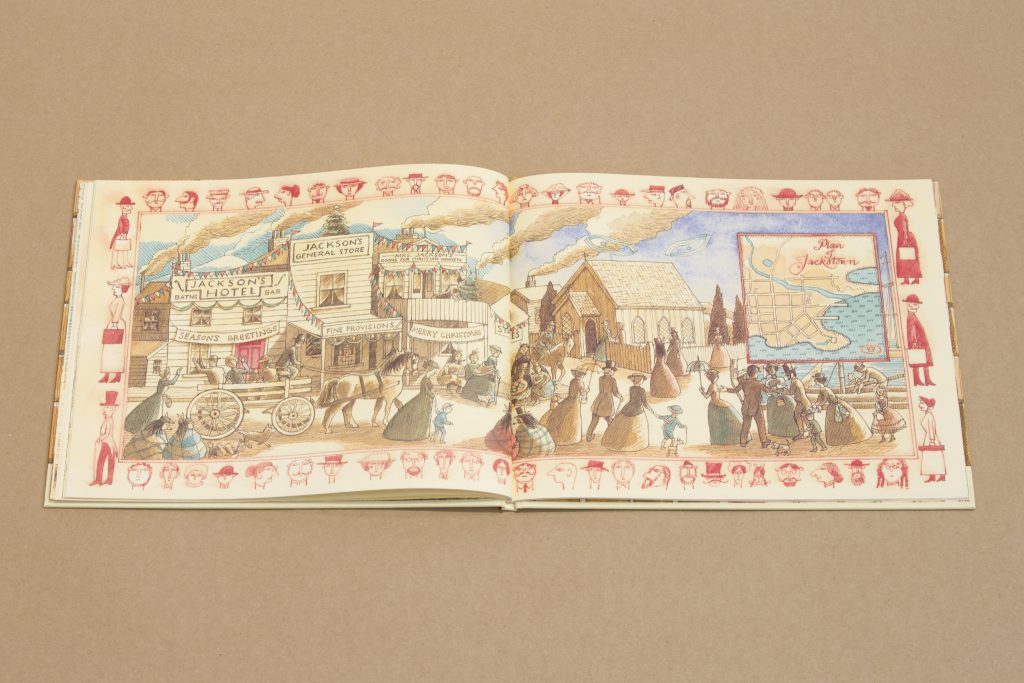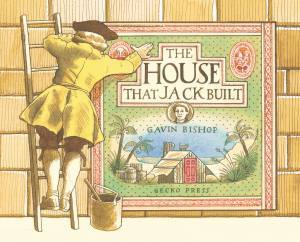By Glenys Bichan, Library Manager at Cambridge High School
In some books, the deeper you look, the more there is to discover and consider.
The House That Jack Built is one such picture book. The depth is in the details—who wears shoes and what are they like? I looked at every page for that answer: boots, buckles, laces, and bare feet.
The first page depicts the clutter and squalid chaos of early London, then the story moves to the natural world of Aotearoa. Jack arrives with his goods and wares, his animals, and his thirst for the world of trade. As The House That Jack Built continues, we see a transformation of the “new world” into a replica of London. What Jack escaped, he in fact brought with him. This story is about what was destroyed in that transformation for those who lived in Aotearoa before Jack arrived with his cat and cow and blankets. It is a book about loss.
 This book is layered. The book’s illustrations are bordered by images that frame the story; you have two narratives on each page that intersect—they need to be looked at in tandem. As the story progresses the frames around the main story highlight the growing colonial impact of Jack’s presence.
This book is layered. The book’s illustrations are bordered by images that frame the story; you have two narratives on each page that intersect—they need to be looked at in tandem. As the story progresses the frames around the main story highlight the growing colonial impact of Jack’s presence.
The big rooster crowing loudly, awakening the world and scaring off the local birds, is an allegory for what the colonisation of Aotearoa has done to the whenua. The horses run rampant, the British flag flies, the whales are killed, and the seals are clubbed. Forever fading in the background is Papatūānuku until all you see is a disfigured face—then Tūmatauenga is introduced, the God of War. “‘Stand up! Protect the Earth Mother! Rise up! Fight for the spirit of Papatūānuku.’ The people took up their weapons and the terrible dance of war was heard over the land.”
 The many layers show us the impact of colonisation, of greed, of the abuse of resources and the melting of mana whenua due to the heat of the traders and settlers. The illustrations are simple for those that need this story to be a representation of the historical events, but they are also deep and rich for those who choose to spend the time examining them.
The many layers show us the impact of colonisation, of greed, of the abuse of resources and the melting of mana whenua due to the heat of the traders and settlers. The illustrations are simple for those that need this story to be a representation of the historical events, but they are also deep and rich for those who choose to spend the time examining them.
The centre piece of this book is the journey of the red door—where it starts, where it ends and the journey it takes as it is placed in different buildings and the Māori world around it diminishes. This imagery alone is plentiful for any year level to discuss and explore.
 The history teacher at our school says, “This book would be a great introduction to the story of whalers, sealers, traders and colonists and the impact they had on Māori way of life. I would use it to start my students thinking about these issues and where they lead, and then I would teach the unit. At the end of our teaching, I would reintroduce this book to see how much deeper the students’ understanding was, as they looked and could unpack the issues more fully in the illustrations and the story.”
The history teacher at our school says, “This book would be a great introduction to the story of whalers, sealers, traders and colonists and the impact they had on Māori way of life. I would use it to start my students thinking about these issues and where they lead, and then I would teach the unit. At the end of our teaching, I would reintroduce this book to see how much deeper the students’ understanding was, as they looked and could unpack the issues more fully in the illustrations and the story.”
This picture book tells the story of colonisation in Aotearoa for our tamariki and our rangatahi. They can look at and see and feel—what happened here, what was the impact, what changed in Aotearoa from page one to the end of the book? This book is a huge asset as a launch pad for deeper learning for our students.
The House that Jack Built is available now from all good bookstores and the Gecko Press website. There are also free comprehensive teacher notes available that cover how the book can be used to teach the new Aotearoa NZ Histories Curriculum.


